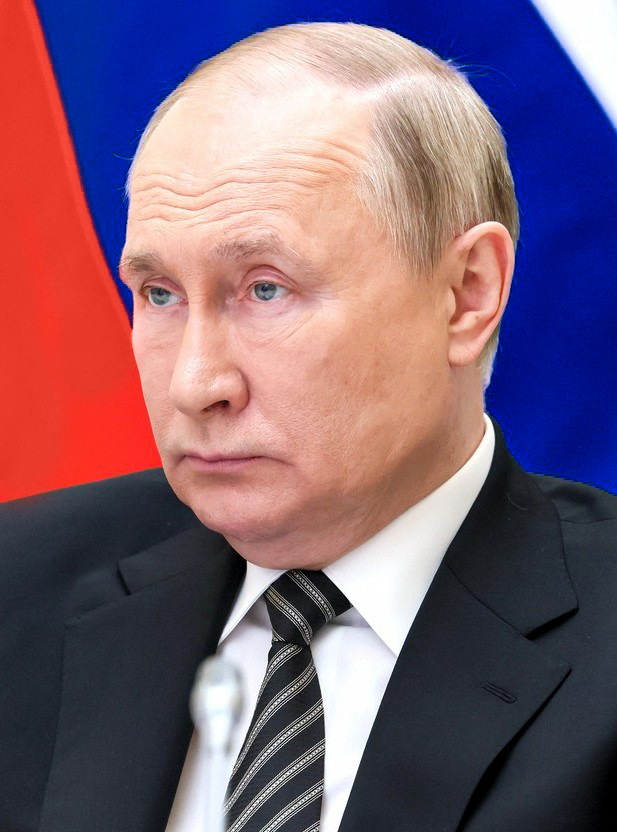
In an effort to decrease Vladimir Putin’s ability to fund the war in Ukraine that Russia started in February 2022, the U.S. and other Western countries have imposed heavy sanctions on Russia. Since invading Ukraine, Russia has lost access to roughly half of its gold and foreign currency reserves. Russian supply chains and economic connections between firms are also undergoing a slow reconfiguration process. Meanwhile, the Kremlin has also lost access to the European energy market due to the EU’s oil embargo and the G7 price cap on Russian oil. Russia has been forced to sell its crude for $47 a barrel, which includes a discount of $30-40 depending on the purchaser. Next week, an EU embargo on Russian oil will take effect as well.
Unfortunately, despite all the embargos, sanctions, and other restrictions, Putin still has enough funds to pursue his war in Ukraine for at least the next 3 years unless something drastic changes.
Russia has ample reserves of gold and Chinese yuan, and even if the Kremlin is forced to cut spending in the future, military and social spending will not be affected as they are ring-fenced.
Get gains in the gym in style with AFP Merch!
To protect its military expenditure, Russia’s budget is designed so that military spending does not depend on volatile oil and gas income but is rather backed by more “predictable” income streams. The Russian Finance Ministry anticipates the ring-fenced expenditures will need to increase by 0.5% of GDP to roughly 17.2 rubles (11.5% of GDP) and then hold at that level through 2025. The increase will take the military expenditure up to 9.5 trillion rubles and social spending to 7.3 trillion rubles.
“The economy is functioning: taxes are collected, businesses are adapting,” a Russian federal official said last week as Putin promised that the military expenditure would not see a reduction. “We still have a piggy bank,” the official added. Should there be a financial shock in the future, it is expected that the Kremlin would cut infrastructure spending and use quasi-state institutions, like development banks, to cover the cost of infrastructure projects.
Russia currently has a surplus of $227.4 billion from 2022, and most expect it to have a surplus this year, despite all the sanctions from the West. One of Russia’s continued exports is its hydrocarbons. However, income from those exports is expected to dip substantially.
Predictions for Russia’s economic future are fairly inaccurate, given that many official forecasts are not accurate. The Russian state budget currently includes 1.7 trillion rubles of revenue from the exportation of 125 billion cubic meters of gas. However, those figures are inaccurate as the macro forecasts do not account for the Nordstream pipeline explosion and loss of revenue as a result. The pipeline explosion occurred right before the budget was submitted in September. “If 90 billion cubic meters [of gas] are exported, that’s already a good result,” said Alexander Isakov from Bloomberg Economics.
In addition to inaccurate export estimates, the budget also does not account for the caps on oil and gas prices or the fact that Russia may agree to discounts on gas and payment deferrals for Turkey in 2023. Loko Bank analyst Dmitry Polevoy wrote, “I value them at $29 billion and $42 billion respectively – we are talking about $18 billion.”
On Monday, Russia extended a deferred payment of insurance premiums until 2024. The deficit was 2.1 trillion rubles more than expected in December. One of the reasons for that is that it needed to pay off 772 billion rubles in deferred insurance premiums. It is unclear how the Kremlin spent the remaining 1.3 trillion rubles.
The deferment on insurance premiums this month means that those costs will not be reflected in the budget until 2024. As a result, the deficit is likely to be 2.3% of GDP. It is officially expected to be 2%, based on oil prices of $70 a barrel, which, as mentioned above, is an inaccurate figure.
According to estimates from Elina Ribakova, deputy chief economist at the IIF, a decrease of $10 in the average price of oil over the course of this year would cost Russia $15 billion. Meanwhile, Bloomberg Economics has a more conservative estimate showing that if Russian crude costs an average of $50 a barrel, then the deficit will increase to about 3% of GDP.
The deficit will not affect Putin’s ability to fund the war, however, because Russia has enough reserves of yuan, euros, and gold to cover the deficit for the next 3 years. Bloomberg has also estimated that the sale of foreign currency could increase from 55 billion rubles this month to 120 billion rubles in February. While unlikely, if oil prices fell as low as $25 a barrel, Russia would burn through its reserve of yuan in a year.
Even if there was a sharp decline in oil and gas revenue and Russia emptied its other financial reserves, military expenditure can still be taken from tax revenues. If the situation were to become that dire, then investment in economic development would likely also be transferred to quasi-state institutions, and Russians would suffer the consequences.
























